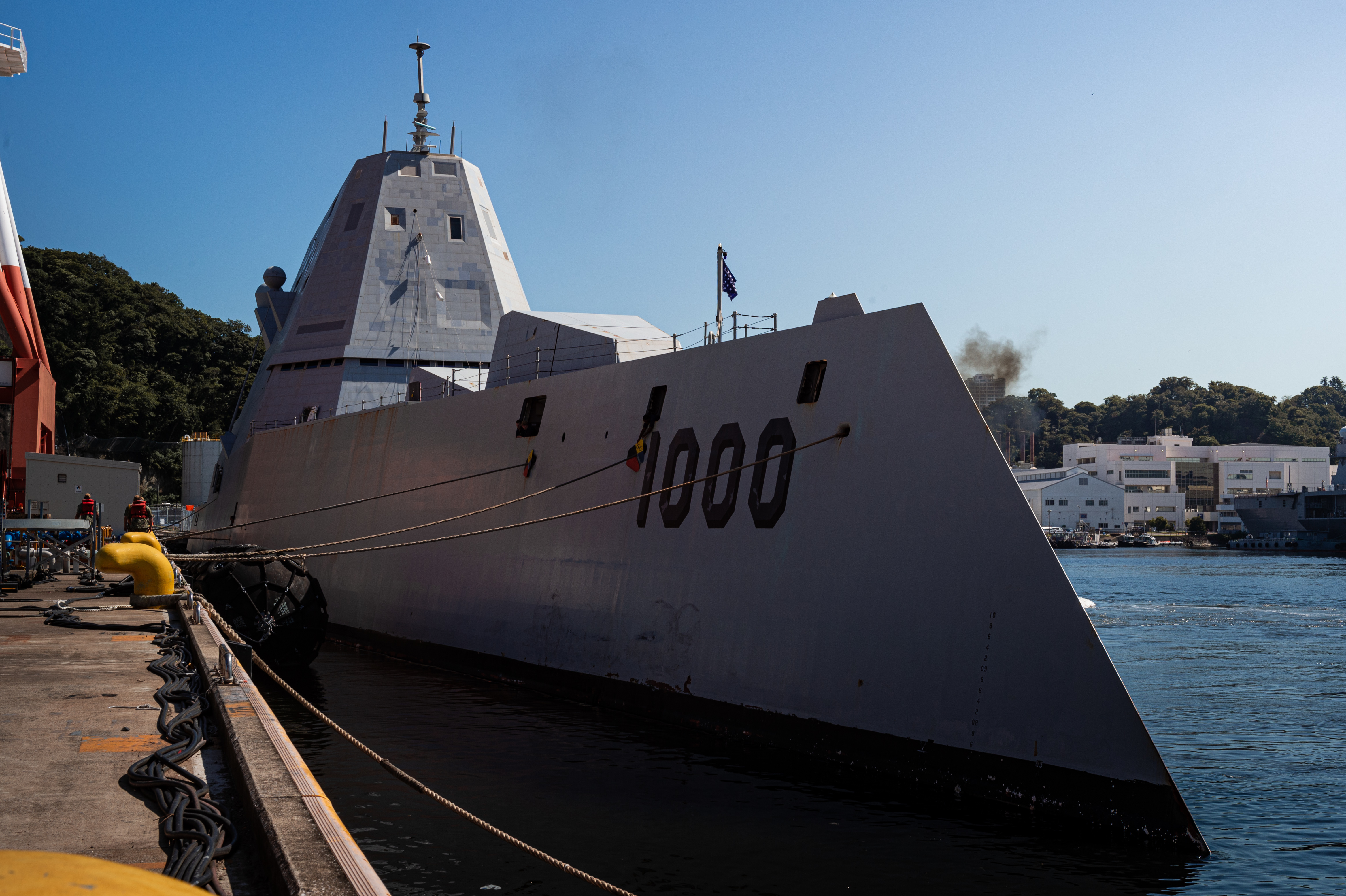
The Navy wants to upgrade its Zumwalt-class guided missile destroyers with a new radar, electronic weapons suite and anti-submarine warfare capabilities, as the service seeks to integrate the platform into the blue water fleet, according to a government request for information issued earlier this month.
The Zumwalt Enterprise Upgrade Solution, also known as ZEUS, would upgrade the destroyer’s radar from Raytheon’s AN/SPY-3 Dual Band Radar to its AN/SPY-6, which the Navy is fielding on the Flight III Arleigh Burke-class guided-missile destroyers.
Before executing ZEUS, the Navy also wants to update its Total Ship Computing Environment infrastructure (TSCEi). But that initiative would not fall under the ZEUS overhaul, according to the RFI issued earlier this month.
The “primary mission of the DDG 1000 class remains Surface Strike,” the RFI reads.
The service is evaluating both the inclusion of MK 41 Vertical Launch System software and the Surface Electronic Warfare Improvement Program, or SEWIP, as part of the ZEUS effort.
As the Navy assesses the potential radar and software upgrades for Zumwalt, it’s also preparing to install hypersonic missiles on the lead ship in the class next year.
USS Zumwalt (DDG-1000), which recently wrapped up an underway in the Western Pacific, will go into the dry dock in late 2023 for an 18-month maintenance availability to receive the hypersonic upgrades in Fiscal Year 2024 and FY 2025, Capt. Shea Thompson, the commodore for Surface Development Squadron 1, told reporters earlier this month.
During the recent underway in the Pacific, the Navy had the chance to test Zumwalt’s capabilities and reliability as it learned how to maintain the platform, U.S. Pacific Fleet commander Adm. Sam Paparo said earlier this month.
“We intend to upgrade its mission systems. We intend to employ its stealthy capabilities, its passive detection, its [mission bay], the ability to integrate undersea unmanned capabilities, surface unmanned capabilities and to really use it as an all-domain platform that can collect. It can sense,” Paparo said.
“It can execute rapid disorienting fires and can do so in contested environments to be a difference maker and an enabling capability. This year was a first step. It was exciting. We tested her. We wrung out its crew. We built confidence in our ability to sustain her. We put her to sea for long periods of time. We gained confidence in her propulsion systems and her weapon systems.”





